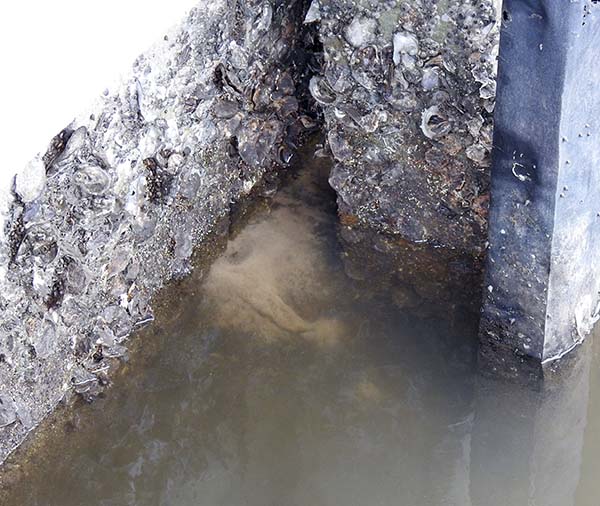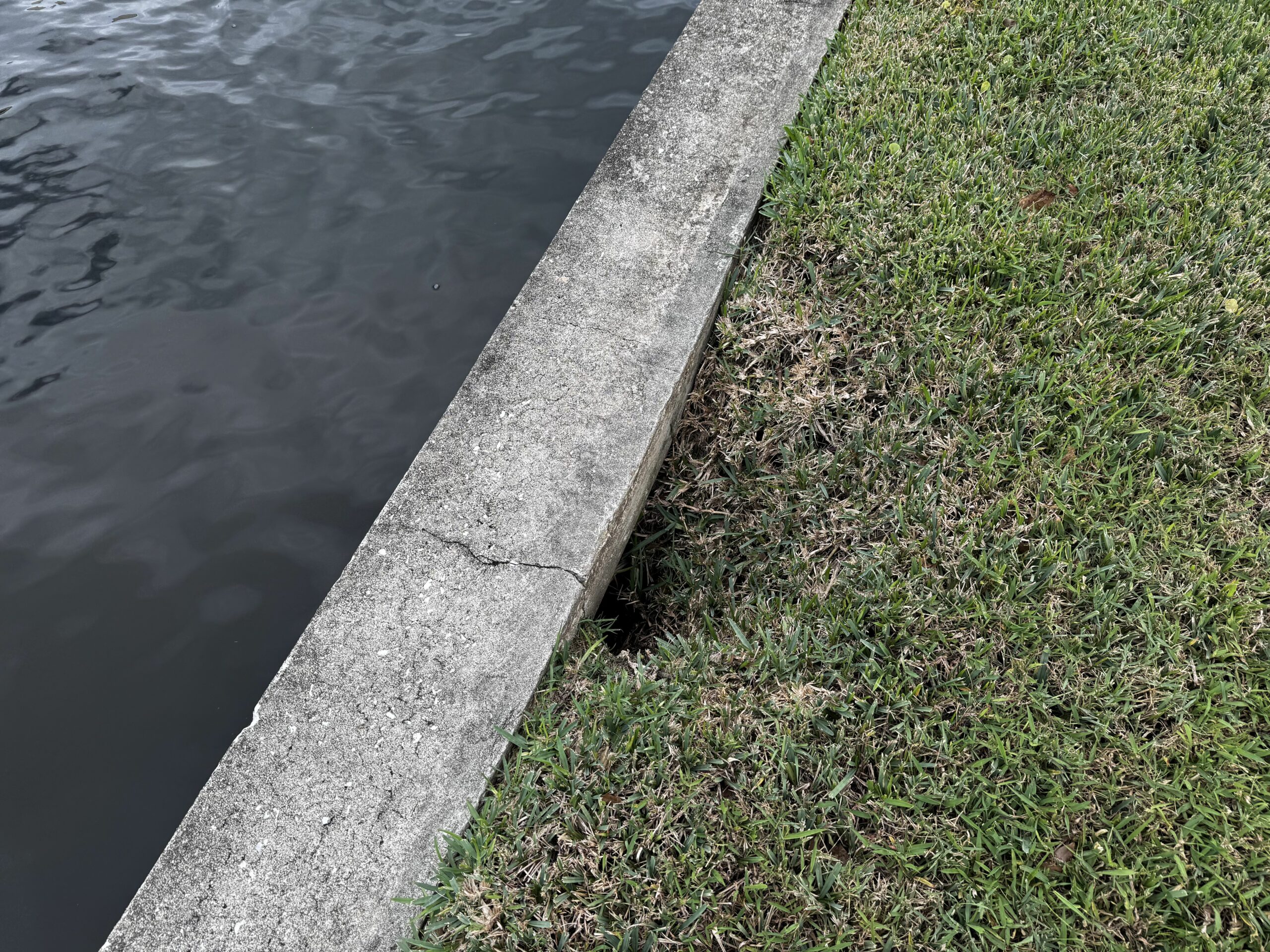Seawalls in variety of ways may be compromised, but one of the single exceptional common issues is from the loss of support soil from behind the seawall or bulkhead. This is predominately created by separation of seawall panel joints and seams.
Upland base soils are washed out by incessant water movement (Tides, Storms and Rainwater), voids begin to develop behind the seawall and progress to further complications, such as sinkholes or settling of the soils along the seawall.
Everyday weather elements create joint separation which allows soils to escape from behind seawalls/bulkheads joints. Age allows these concrete slabs or panels to move apart vertically allowing water to permeate through the seawall joints thus creating soil loss. As the soil migrates through the seawall panel joint separations or cracks in seawall panels into the water body, sinkholes are created behind your seawall.


In larger voids a Cementous or Epoxy grout is injected into a Vinyl form for optimum sealing. The forms are installed approximately 12” into the mud for ideal sealing and project to one foot below existing seawall cap. The vinyl forms have a life span of approximately 50 years and are attached to the existing seawall with 316 Grade Stainless Steel fasteners.
The procedure for this repair entails jetting the form into the substrate to achieve proper penetration and the affixing the PVC form to the existing seawall with stainless steel anchors. Next, the material lying within the form is excavated to insure proper clearance. Once this is complete the Cementous epoxy grout is pumped into the void and allowed to strengthen. In extreme conditions, a segment of new vinyl seawall may be required to remedy the specific situations.
Many waterfront homes have hardened structures directly affixed to their seawall cap, such as concrete sidewalks, captain walks and retaining walls. When voids or cavities exist beneath these concrete structures conventional repairs do not apply.
Our 2-part polyurethane Foam can be injected through ports to gain access beneath any concrete that has settled due to major soil loss and movement. This practice is referred to as deep foam injection. In this scenario, we utilize foam that expands to seal seawall seams and other voids beneath the concrete sidewalks. This foam expands through a controlled catalyst which allows us to inject careful short burst of foam material. This process is repeated incrementally until the seams/voids are filled. This is not a lifting and leveling foam product.
Seawall Savers discontinued using hydraulic concrete for seam repairs years ago. We determined that the expansion and contraction of concrete continued to allow seams to leak. The hydraulic concrete cracked along with the concrete seawall movement. We have progressed with new technologies to provide lasting repairs to your investment.
Traditionally most seawalls have a strip of filter cloth attached over the seawall panel joint and weep hole to prevent soil loss. Over a period of time, variations in water and tide levels, coupled with intense rainstorms comprised these cloth strips. When this occurs, soil loss escalates and creates sinkholes. Replacing these strips with new cloth is an exceptionally inexpensive manner to fix seawall seam dilemmas. Unfortunately, this methodology has severe drawbacks and negative consequences.
When installing new panels of filter cloth behind a seawall, it is imperative to dig down deep enough to get below the mudline. This entails an excavation that must be approximately 6 to 7 foot deep for the installation to work properly. This creates a large void at each seam (approximately every 5 foot) and produces lots of excessive spoils. The landscaping and irrigation are negatively impacted, which results in more money being laid out for the repair cost.
This repair technique is usually undertaken by inexperienced or unlicensed contractors or local landscaper with little experience. Please trust a professional when undertaking this scope of work.
Questions about your seawall repair options? Contact our office today for a FREE estimate. We welcome the opportunity to review your seawall needs and earn your business!
(239) 284-6830